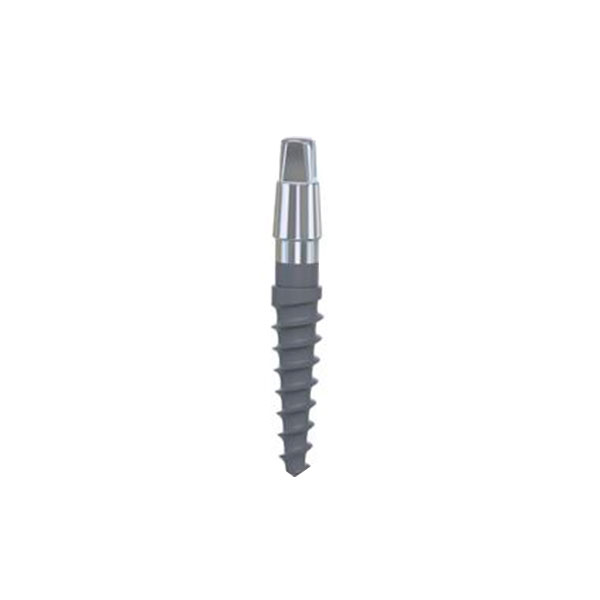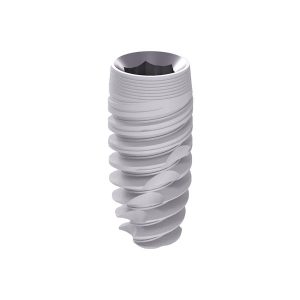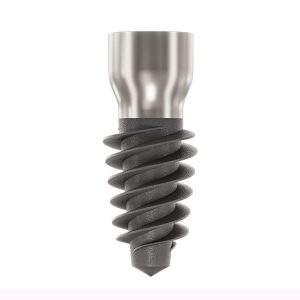One-piece Implant
One-piece Implant
$65
IDL One-piece brings simplicity and convenience and allows a single-stage restoration protocol, while saving time, reducing trauma and delivering the esthetics your patients desire.
Description
Implant body available in a variety of lengths and diameters: 2.8, 3.0 diameter implants allow placement in the limited tooth spacing of the laterals and central incisors. IDL One-piece 3.3 is indicated for placement in all tooth locations. The IDL One-piece has been shown to be stronger when loaded to failure than most industry-standard under-4-mm diameter implants. Those implants can be placed using a single-stage protocol, while soft-tissue experiences much less trauma than typical two-stage protocols. Due to the uniform structure, it also has a very high success rate when immediately loaded.
At IDL, our objective is to provide safe and high precision dental products and services to the clients.
This is why each product undergoes the strictest quality control measures. We ensure that a high percentage of samples are taken from every batch. Each sample passes a very strict set of tests of cleanliness and conformity thus ensuring minimal rejections afterward. All of our products adhere to the highest international standards. All IDL Implants implants are made of titanium alloy Ti-6Al-4V ELI, in accordance with ASTM-F136-02. IDL One-piece implants undergo SLA surface treatment.
IDL One-piece Implant Features:
- This state-of-art implant special feature is one-piece, titanium alloy construction, which provides maximum strength, while keeping a slim shape and small diameter.
- Allows treatment of narrow spaces that cannot be otherwise handled with larger two-piece implants.
- The IDL One-piece has been shown to be stronger when loaded to failure than most industry-standard under-4-mm diameter implants.
- Those implants can be placed using a single-stage protocol, while soft-tissue experiences much less trauma.
- Implant body receives the same SLA surface treatment as other IDL implants.
- IDL One-piece is a small-diameter implant for the long-term treatment of missing maxillary laterals and mandibular incisors.
SLA Surface Treatment:
The classic SLA surface, short of «Sand-blast, Large grit, Acid-etch» is based on large aluminium oxide Al2O3 particles sandblasting technique that generates a macro-roughness on the titanium surface. Sandblasting is followed by acid-etching batch at high temperatures. As a result, subtle-sized 2-5 micron micropores appear at the implant surface. This unique macro/micro-topography provides an ideal structure for the cell attachment while reducing the possibility of bacterial colonization. SLA surface treatment technique seemed to be one of the most studied and best documented surfaced in a modern dental implantology. Cell culture tests, histological studies of bone, all confirmed its strong long-term performance, high mechanical stability and a low odds ratio of developing periimplantitis. This makes the SLA a perfect choice for the contact surfaces of the implants. IDL has improved the process, making it hands-free and minimizing the aluminum oxide residuals that may remain on the surface and could significantly impair osseointegration.
- Survival rates:
High and consistent survival rates (over 95% after a five-year follow-up). - Bone Preservation:
Average bone loss of <1 mm after five years (Based on the implant loading time). - No Peri-Implantitis
Very low prevalence of peri-implantitis over the 5-year follow-up period. - No aluminium contaminants
Mean a more successful and accelerated process of osseointegration than ever.
| Lenght | Ø 2.4 | Ø 2.8 | Ø 3.0 | Ø 3.3 |
|---|---|---|---|---|
| 10.0 | IOP 1024 | IOP 1028 | IOP 1030 | IOP 1033 |
| 11.5 | IOP 1124 | IOP 1128 | IOP 1130 | IOP 1133 |
| 13.0 | IOP 1324 | IOP 1328 | IOP 1330 | IOP 1333 |
Additional information
| Diameter: |
|
|---|---|
| Length (mm): |
|






